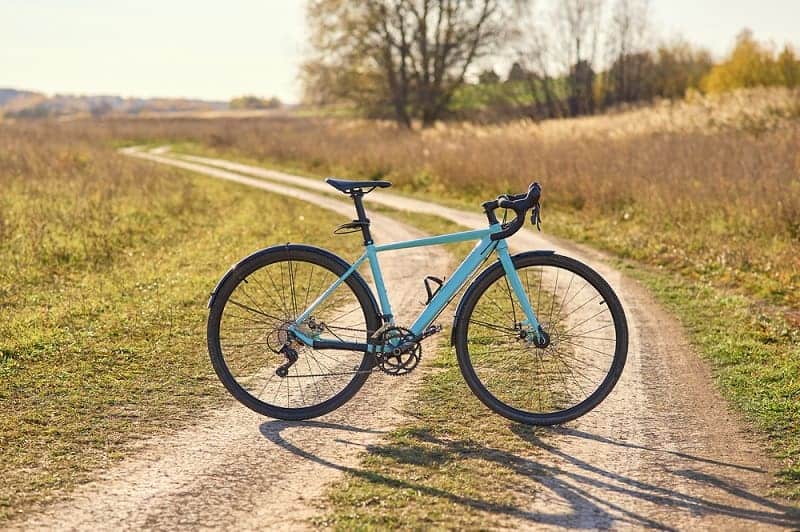MTBs are the obvious choice for anyone trying to get into mountain biking. They’re sturdy, fast, and specifically designed to handle rough and uneven terrain.
But what if you’re looking for a more versatile bike to do the job or already own a cyclocross bike? Can you use a cyclocross bike for mountain biking?
What are the differences between these two bikes?
Keep reading to find out!
Contents
What are Cyclocross Bikes?

As the name suggests, cyclocross bikes are made for cyclocross races.
These races are usually made up of several different terrains, from pavement to forest trails. For this reason, cyclocross bikes must be versatile so they can handle all different terrains without the rider having to adjust the tires, gears, or other components to make the bike compatible.
Cyclocross races are usually held during the colder months, and many riders use their bikes for commuting during the off-season as they’re good for city riding.
What are Mountain Bikes?
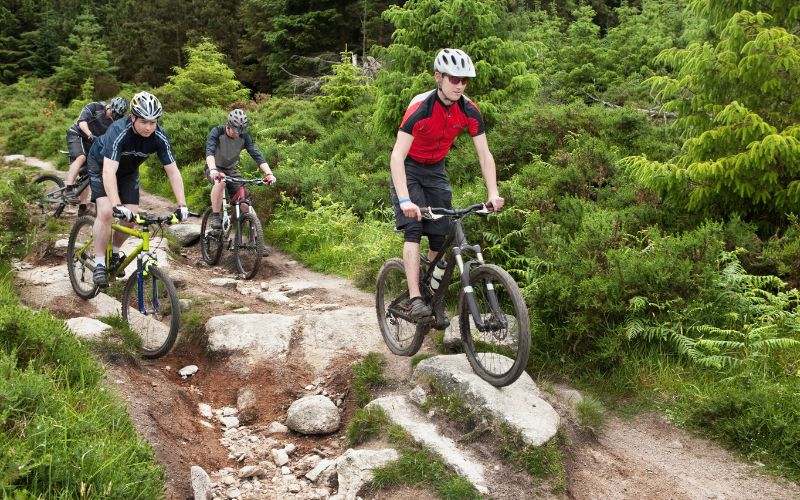
Mountain bikes, or MTBs, are made for cycling on rocky terrain. They are great at traversing through intense, high-impact paths and jumping off ledges without harming the rider or bike.
Its suspension forks, gears, and weight make it durable enough to handle the toughest paths without breaking or bending from the pressure or impact.
Although you technically can ride a mountain bike anywhere, their tire’s low PSI and prominent treads make them somewhat difficult for city riding.
Mountain bikes are definitely specialty bikes, serving their intended purpose wonderfully but falling somewhat short as far as versatility is concerned.
Side by Side Comparisons: Breaking it Down
Although cyclocross and mountain bikes can technically be used for the same purposes, their design makes them fundamentally different.
From their overall build to specific components present in MTBs but lacking in cyclocross bikes, it’s clear that there are some major differences between these two classic biking choices.
Let’s go over how these two bikes stack up against each other and examine how the cyclocross bike’s build affects its performance when used for mountain biking.
Suspension Fork
Suspension forks help protect mountain bikers from the rugged terrain’s impact. They also come in handy when a biker flies off a ledge or races down a bumpy hill.
Additionally, they help the biker control the front wheel, allowing them to easily turn and keep the bike steady, which is a must when going through unfamiliar and possibly dangerous territory.
Cyclocross Bikes
While some cyclocross bikes will have suspension forks, it’s not a must, and racers participating in competitions will very rarely have them.
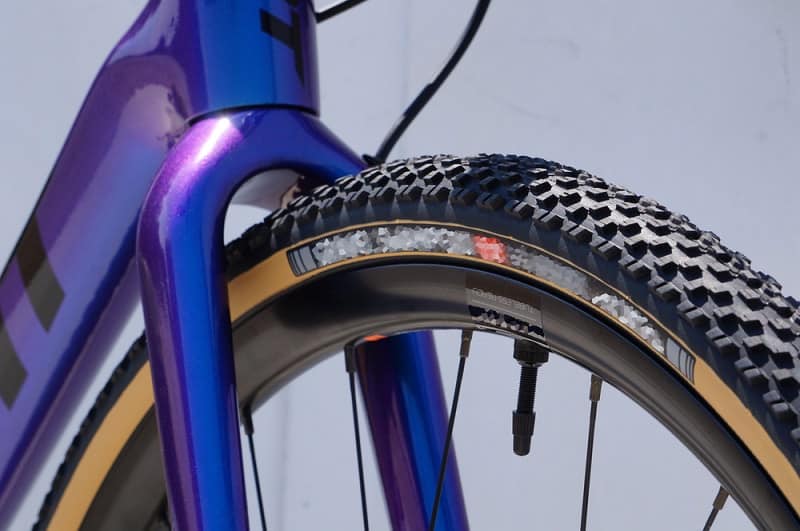
Unlike mountain biking, cyclocross cycling does not require the bike to be suspended as riders rarely traverse very steep hills or jumps.
Suspension forks also add extra weight, which is not particularly useful for cyclocross competitions.
So, you may experience more impact if you’re riding a traditional cyclocross bike for your mountain biking adventures.
This could cause your bike’s spokes and rim to bend or break on impact. You may also end up with a few bruises from slamming down onto your bike each time you ride off a ledge.
Mountain Bikes
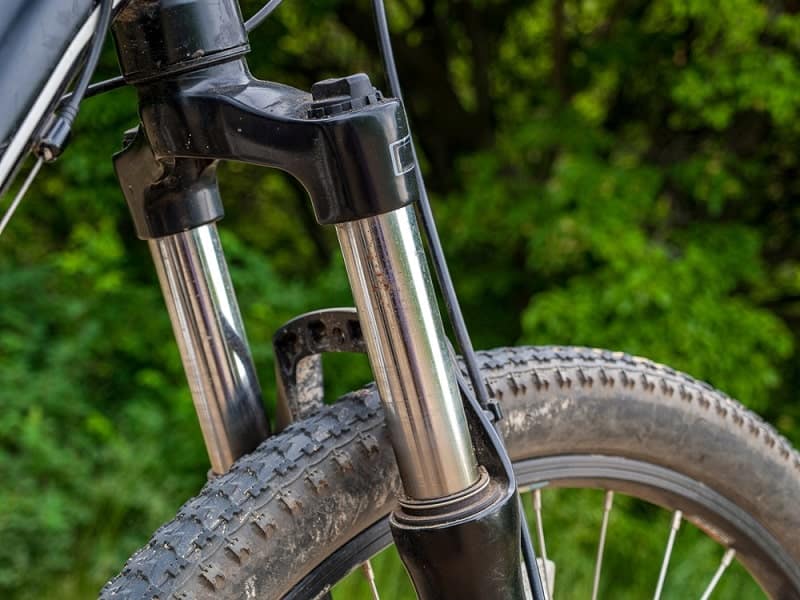
Mountain bikes are made to be pushed to the limits and endure harsh falls while protecting the rider. Suspension systems also protect your rims and spokes, ensuring they won’t snap from the impact.
Suspended bikes also allow the rider to cycle across rocks and holes without being knocked off their bike.
Though mountain bikes are less suited for city riding than cyclocross bikes, their suspension forks make them a great option for bikers commuting in old European cities with cobblestone streets, like Rome or Paris.
So, suspension forks are a must for mountain biking. Luckily, you can find a few cyclocross bikes that have them or customize your own bike to include one.
Watch the video below of one biker’s experience with cycling and jumping on a cyclocross bike without suspension forks.
Brakes
Effective brakes are crucial when controlling your bike while mountain biking, especially during long descents. They can help you slow your bike down and suddenly stop if you come across a cliff.
Cyclocross and mountain bikes have different types of brakes and their overall build calls for different braking patterns. Let’s learn about them!
Cyclocross Bikes
Cyclocross bikes typically use rim brakes, which compress the wheel to stop the bike.
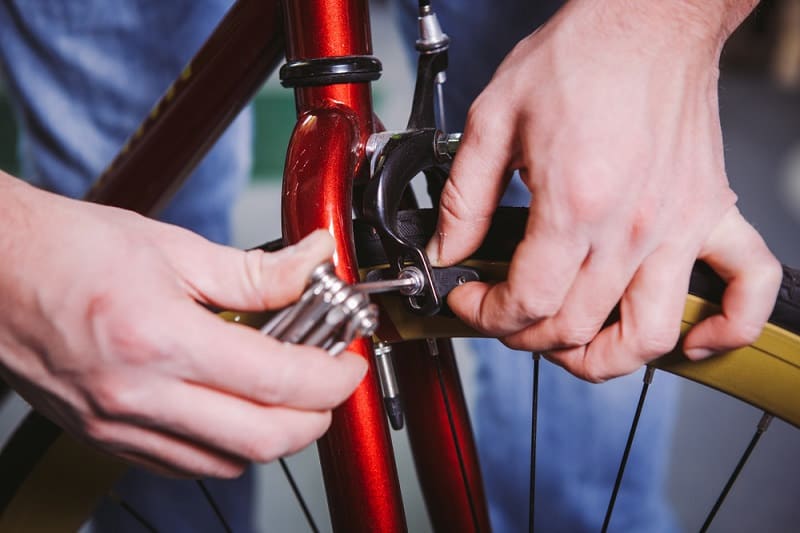
While this may be fine for city biking and cyclocross competitions, it’s less than ideal for mountain biking.
Since cyclocross bikes are lighter and don’t have suspensions, the riders often have less control over the bike. This forces them to use their brakes more often to ensure they’re not going too fast and can maintain which direction they’re headed.
Rim brakes are becoming increasingly unpopular in mountain bikes as they tend to wear down the rim and become less effective if wet from rain or mud. This could turn a relaxing mountain biking trip into a dangerous venture.
They’re also more prone to overheating, especially if used on a cyclocross bike as you may have to drag your brakes to prevent yourself from crashing.
So, you may find that you have to replace your brakes and rims more often.
Mountain Bikes
Most mountain bikes nowadays have disc brakes, which stop the bike from moving by compressing the rotor.
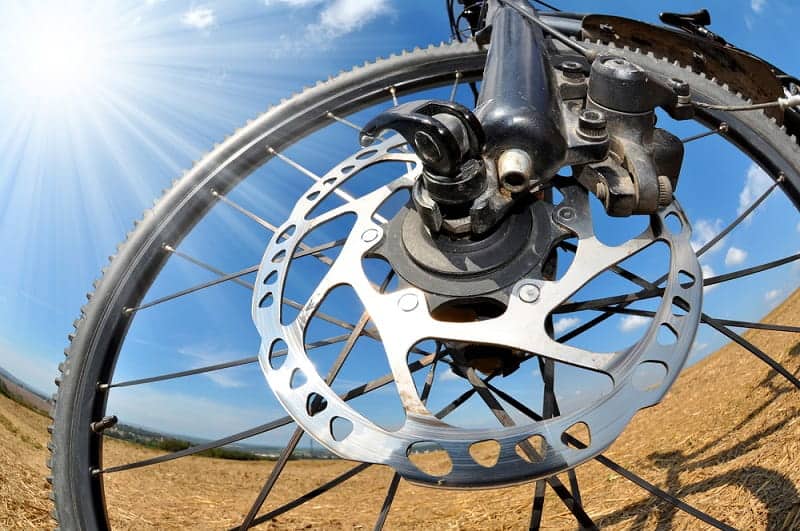
This method of braking is less prone to overheating and more efficient at stopping and slowing down your bike.
Although you will need to regularly replace your brake pads, they’re inexpensive
You also need to brake less since the bike’s weight and suspension forks allow you to descend long hills without dragging your brakes to maintain control.
Tires
Solid wheels are essential to a smooth (and safe!) mountain biking experience. The tires must be able to grip the ground while keeping the rider steady.
They must also not be too hard, allowing them to glide over bumps without knocking the rider off of their seat.
Although you can always customize your bike’s wheels to fit your biking needs, a cyclocross and MTB have been built for different purposes and their forks may not be the right size to accommodate different tire sizes.
Cyclocross Bikes
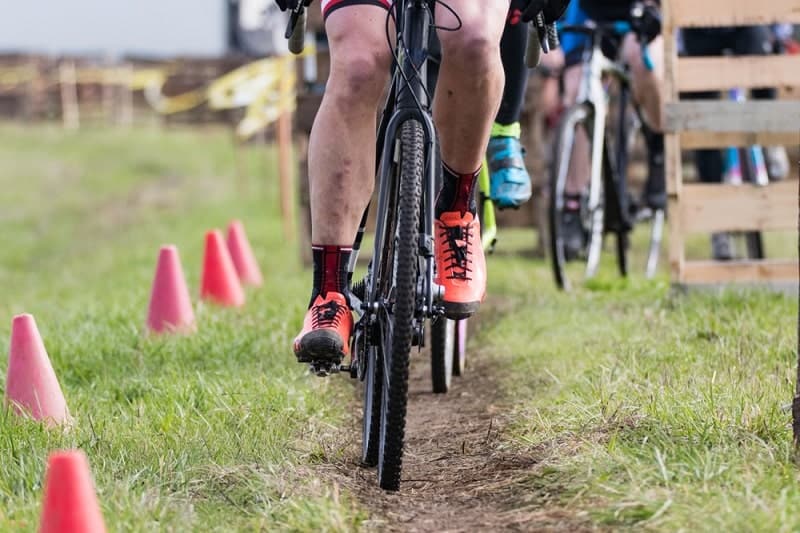
Cyclocross bikes have thinner wheels than mountain bikes, which makes them faster and allows them to make sharp turns, especially over flat terrain.
While these wheels can work for mountain biking, you must lower their PSI to ensure they can go over sticks and stones without breaking your bones.
You may also find they don’t glide on mountains the same way MTB wheels do.
Cyclocross bikes are also knobby and covered with treads, but they are slicker than traditional MTB wheels, causing them to be a bit more unpredictable.
Mountain Bikes

Mountain bikes have extremely thick wheels that aren’t prone to punctures. They are also larger, so you can ride over stones on the ground instead of between them.
Their big treads grip to surfaces, giving you a good amount of traction even on damp ground.
MTB wheels usually have a higher PSI which, when combined with the suspension forks, create as seamless a biking experience as possible.
Weight
These two bike types’ weights strongly impact how they perform in rugged terrain and the rider’s ability to control the bike.
Let’s take a look!
Cyclocross Bike
Cyclocross cyclers often need to carry their bike up hills before descending them. They also need to go very fast and be light enough to be aerodynamic. Many cyclocross bikers can reach up to 48 to 50 kph (30 to 31 mph).
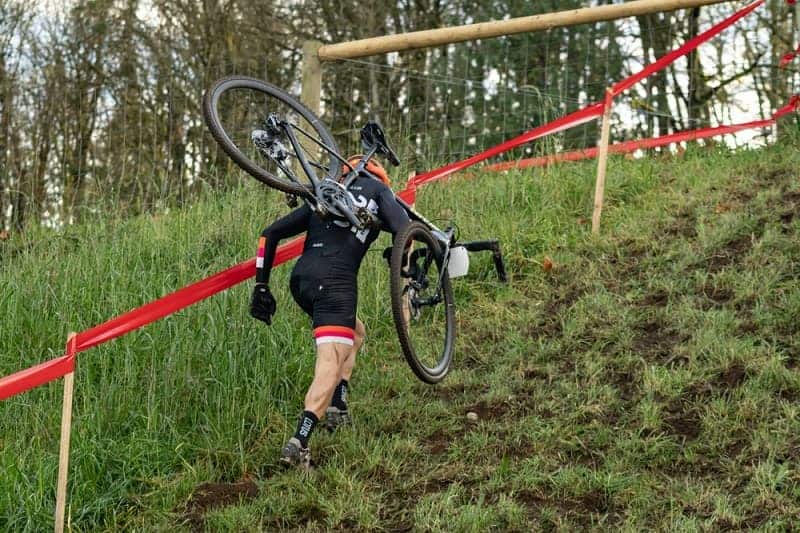
So, they’re often much lighter than their mountaineering counterparts.
Cyclocross bikes have thinner wheels, rim brakes, and a lightweight frame. They also lack a fork suspension, which usually makes bikes significantly heavier.
This makes cyclocross bikes light enough to be carried.
Also, because they’re so lightweight, they have a lower center of gravity, making them more difficult to control while gliding through the air.
However, this does allow you to go faster when racing through mountains, and MTB owners are looking for ways to make their bikes lighter to achieve greater speeds and prevent their disc brakes from overheating.
Mountain Bike
Mountain bikes’ heaviness gives them a greater center of gravity, allowing you to jump off ledges without worrying the wind is going to affect your fall.
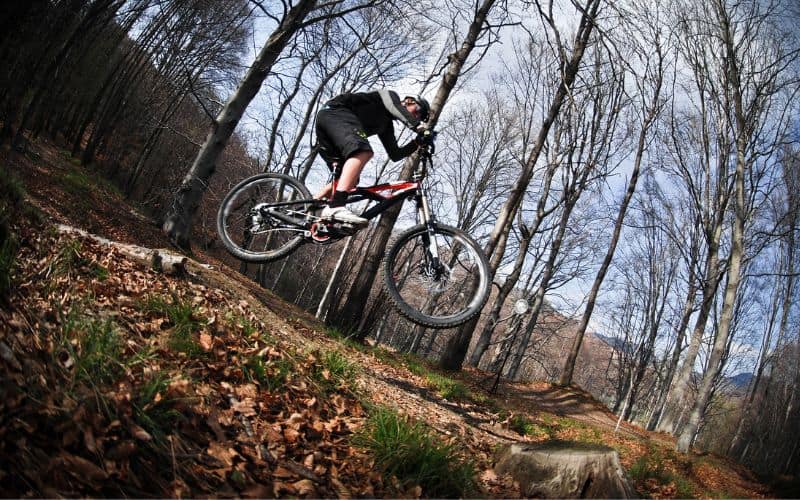
However, this does mean that they’re also less portable and more prone to their disc brakes overheating since they have greater momentum.
This also means they go much slower as MTBs rarely go over 10 to 12 kph (6 to 7 mph), which is appropriate for mountain biking since the trails can be unpredictable.
Handlebars
Handlebars don’t just serve an aesthetic purpose, they also drastically change the way you steer and how you’re seated on your bike.
Let’s explore why there’s no compromising when it comes to mountain bikes’ straight handlebars.
Cyclocross Bikes

Cyclocross’s drop handlebars are the least versatile part of the bike.
Drop handlebars allow cyclocross bikes to conform to the Union Cycliste Internationale (UCI)’s parameters, which state a bike cannot be wider than 50 centimeters (or 19.7 inches). Since straight handlebars are too wide, all bikes must use drop bars.
While these are good enough for cyclocross cycling since bikers can lead forward, making them more aerodynamic and faster, they are not the right choice for mountain biking.
You risk being unable to control your bike’s handlebars and make wide turns, which could cause you to crash.
If you’re planning on using your cyclocross bike for mountain biking, we strongly recommend switching out your drop bars for some straight handlebars.
Don’t worry. You can switch them back when competing in cyclocross competitions.
Mountain Bikes
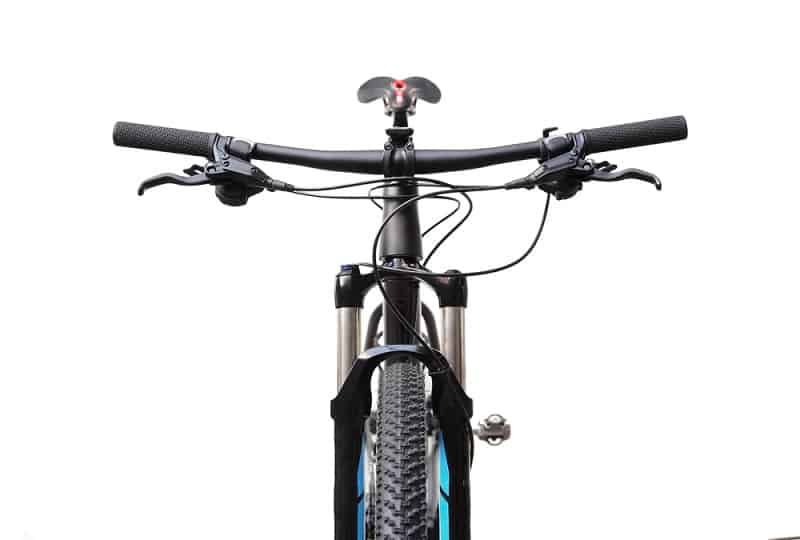
Unlike cyclocross bikers, mountain bikers need to sit up when on their bike so they can clearly see the path ahead. They also need to place their hands far enough apart to make wide turns.
Straight handlebars allow them to do this, and they even help keep the rider suspended during big jumps.
Although drop bars do help riders go faster, this speed isn’t necessary for mountain biking.
Mountain biking without straight handlebars could make you lose control of the bike and even cause you to crash since you won’t be able to watch where you’re going.
Price
Let’s look at how these two bike types compare in terms of price.
Cyclocross Bikes
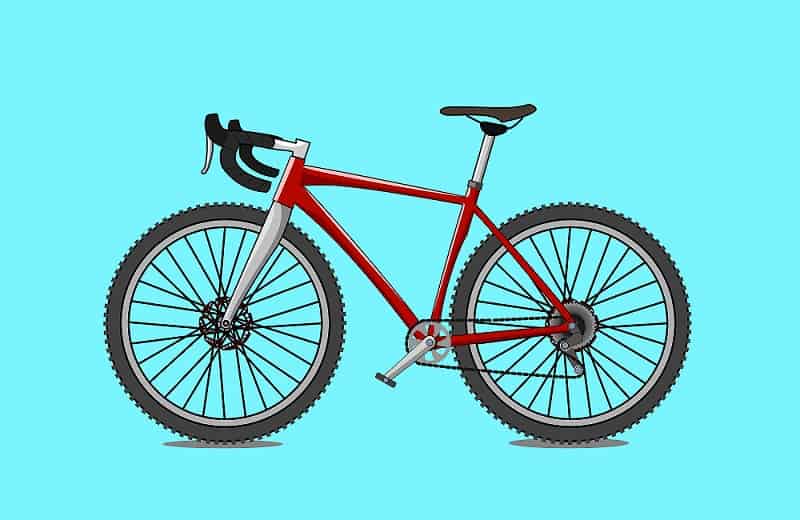
These bikes tend to be pricer, sometimes being more than twice as much as MTBs. However, one upside is that they’re versatile enough to use for commuting, road biking, and yes, even mountain biking.
Mountain Bikes

Mountain bikes tend to be cheaper but could be as expensive as a low-end cyclocross bike if you customize them with high-end parts.
However, low-end mountain bikes may only cost you a few hundred dollars, which is very affordable for a specialty bike.
The Global Mountain Bike Network has a very informative video testing how cyclocross and mountain bikes compare on different terrains and explaining their key differences.
Comparison Table
| Cyclocross Bikes | Mountain Bikes | |
| Suspension Forks | Do not have suspension forks, which could make maintaining control of your bike difficult | Have suspension forks to reduce impact force |
| Brakes | Uses rim brakes, which could lead to overheating while mountain biking | Uses disc brakes, which are more effective at braking and dissipating heat |
| Tires | Have thinner tires with smaller treads | Have bigger tires with larger treads which are perfect for navigating over rough terrain |
| Weight | Are lighter, which makes them faster | Are heavier, which ensures a greater center of gravity and more control |
| Handlebars | Have drop handlebars, which could make sitting upright and turning difficult | Have straight handlebars, allowing you to make wide turns, sit upright, and see the road ahead |
| Prices | Are more expensive | Are cheaper |
Wrapping Things Up
You can use cyclocross bikes for mountain biking, but you may need to make a few adjustments.
First, you must switch out its drop handlebars for straight ones. Secondly, it’s advised to lower the tire’s PSI, making your riding experience smoother.
If you are looking to buy a cyclocross bike that you’re planning on using for all sorts of riding, we recommend getting one with suspension forks as they will allow you to jump and traverse cobblestones without being shaken about.
The great thing about bikes is that you can always customize and tweak parts to make them fit your next big adventure.
So if you’re trying to dip your toes into the mountain biking world but only own a cyclocross bike, go for it! It will still be a great learning experience and you can always buy an MTB later when you’ve become a true mountain biking geek.
What’s your experience using a cyclocross bike for mountain biking? Is there anything else you’d change about your cyclocross bike for mountain biking?
Let us know in the comments below!
